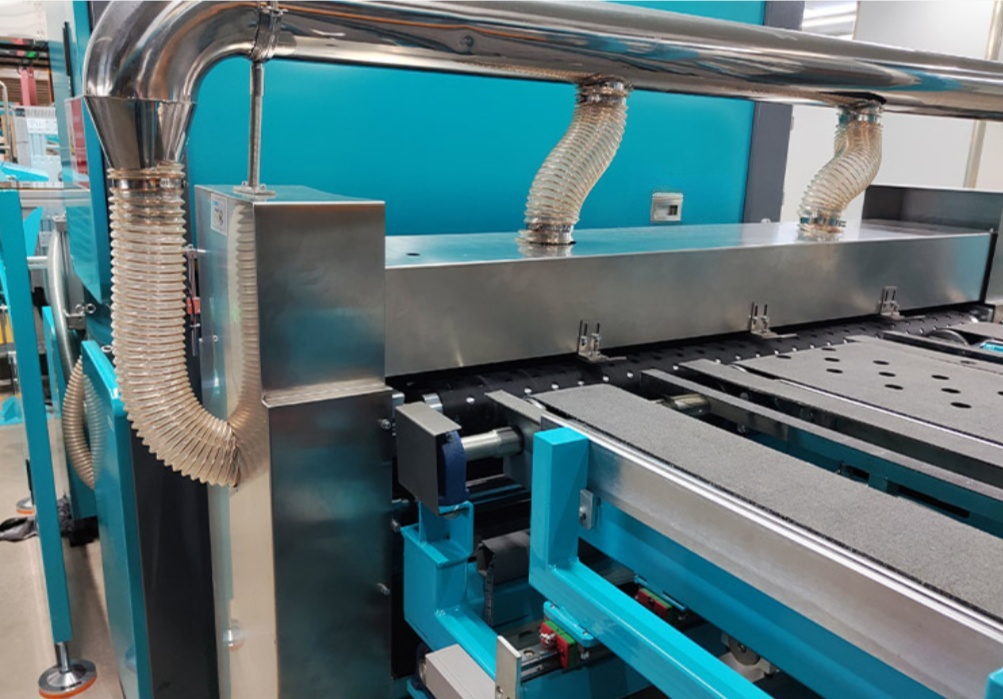Solidot's remote I/O XB6S PTO pulse output module is applied in substrate cutting and stacking systems
The Substrate Cutting and Stacking System is a high-precision production equipment designed to cut large-area substrates into predefined dimensions and shapes, followed by precise stacking to meet subsequent printed circuit board (PCB) manufacturing requirements. It is widely used in PCB fabrication, electronic component processing, and related fields.
The system consists of multi-axis drive units, cutting mechanisms, vision positioning modules, stacking robotic arms, and control units. It significantly enhances cutting efficiency and precision, reduces material waste, and meets the processing demands of complex irregular-shaped substrates.
Solidot products used in this case: XB6S-PN2002、XB6S-3200、XB6S-0032B、XB6S-PT04A, etc.

I. Production Process Overview
Workflow of the Substrate Cutting and Stacking System: Positioning → Path Planning → Cutting Execution → Stacking Control
Positioning
The vision system scans the substrate to capture position, dimensions, and contour data, ensuring precise alignment of the cutting start point and path.Path Planning
Generates cutting paths based on design blueprints or real-time input parameters, optimizing toolhead trajectories to improve efficiency and minimize waste.Cutting Execution
A four-axis stepper system drives the cutting toolhead along predefined paths for multi-dimensional motion, enabling straight-line, curved, and irregular-profile cuts.Stacking Control
Post-cutting, robotic arms grasp and stack the substrates in predefined sequences, ensuring neat alignment and scratch-free handling.
II. I/O Module Application
Traditional cutting systems rely on fixed programming controls, requiring manual reconfiguration of servo parameters and motion logic when switching substrate specifications. This process is time-consuming, dependent on specialized personnel, and impacts production efficiency. The client urgently required a flexible control system capable of:
Automatically adapting cutting paths via external input parameters.
Achieving synchronized high-precision control of four-axis servos.
Reducing electrical wiring complexity while enhancing system responsiveness and stability.
System Architecture:
The PROFINET protocol is adopted for system communication.
The XB6S-PN2002 coupler module serves as the core network node, integrating the XB6S-3200 digital input module, XB6S-0032B digital output module, and XB6S-PT04A four-channel PTO pulse output module into the PLC control network. These components collaborate to manage signal interactions and multi-axis motion control.
Key Roles:
Digital I/O Modules handle switch-type signals (e.g., sensor inputs, actuator outputs).
XB6S-PT04A Module precisely controls the four-axis stepper system in three critical operations:
Positioning Control
The host PC sends positioning commands via PROFINET to the XB6S-PT04A module, which outputs pulse signals to drive the four-axis system to target positions. The module ensures high-precision pulse output and rapid response for accurate and stable positioning.Cutting Control
After positioning, the host PC issues cutting commands. The XB6S-PT04A module controls the stepper system to execute predefined paths and speeds. It supports multiple motion modes (absolute/relative positioning, speed mode) and trapezoidal acceleration/deceleration algorithms, minimizing vibrations and improving cut quality.Stacking Control
Post-cutting, the module directs the four-axis system to move substrates to stacking platforms with precision. It enables real-time speed/position adjustments, motion merging, and homing functions to reset the robotic arm for subsequent operations.
III. XB6S-PT04A Module Overview

The XB6S-PT04A module is designed for versatile stepper/servo motor driving scenarios. With high-frequency output, multi-channel support, multi-pulse modes, and diverse motion capabilities, it is widely applied in:
Industrial robot motion control
Precision conveyor synchronization systems
Packaging machinery sequence control
This module ensures stable operation and high-efficiency production in automation fields, delivering robust performance for complex industrial applications.
Recommended Products

XB6S-PN2002
PROFINET filedbus coupler module

XB6S-0032B
32-channel digital output module, output PNP type

XB6S-PT04A
4-channel PTO pulse output module

XB6S-3200
32-channel digital input module, input NPN/PNP compatible, input filter default 3ms